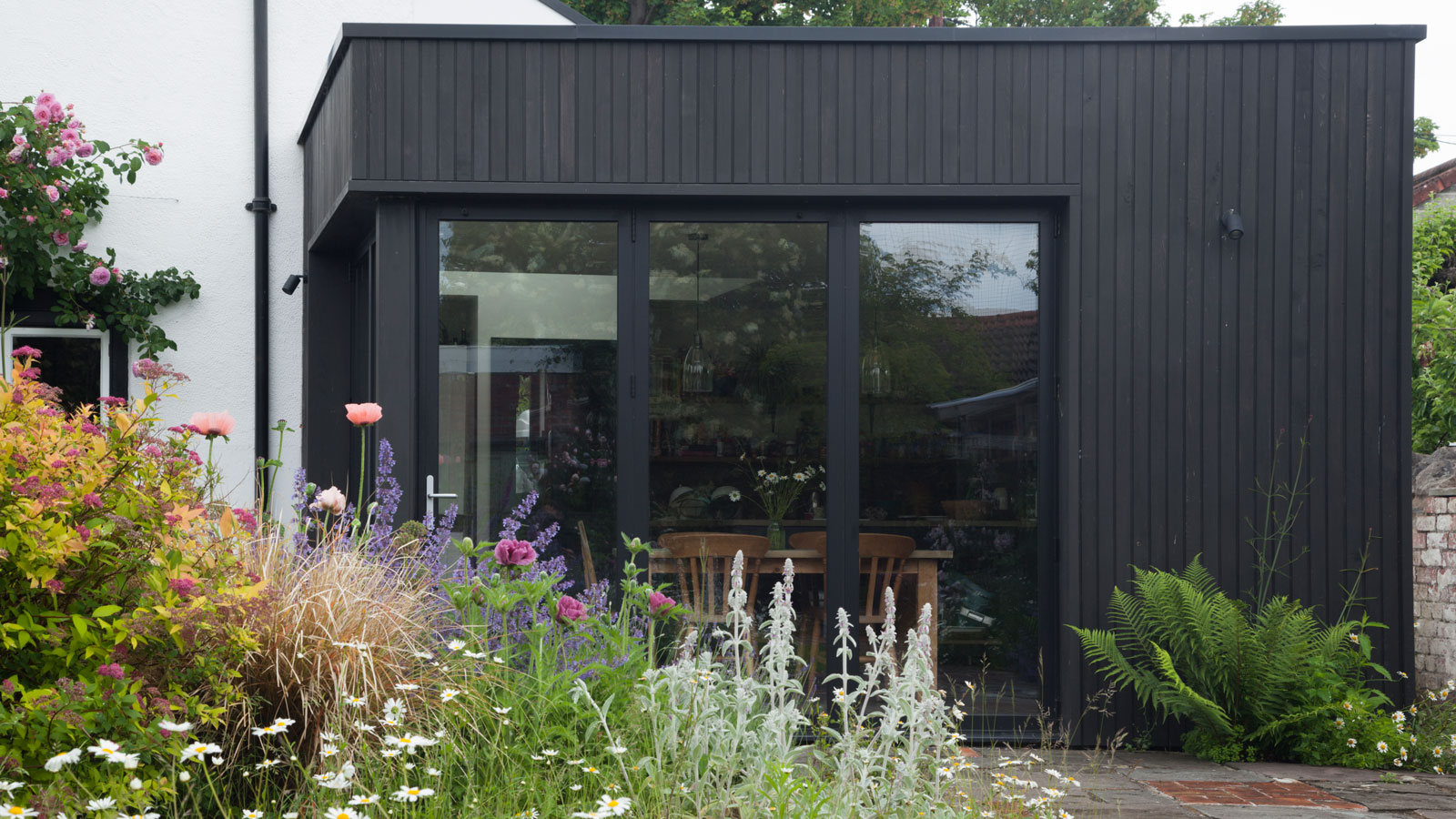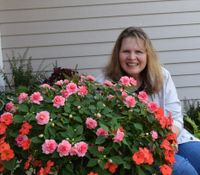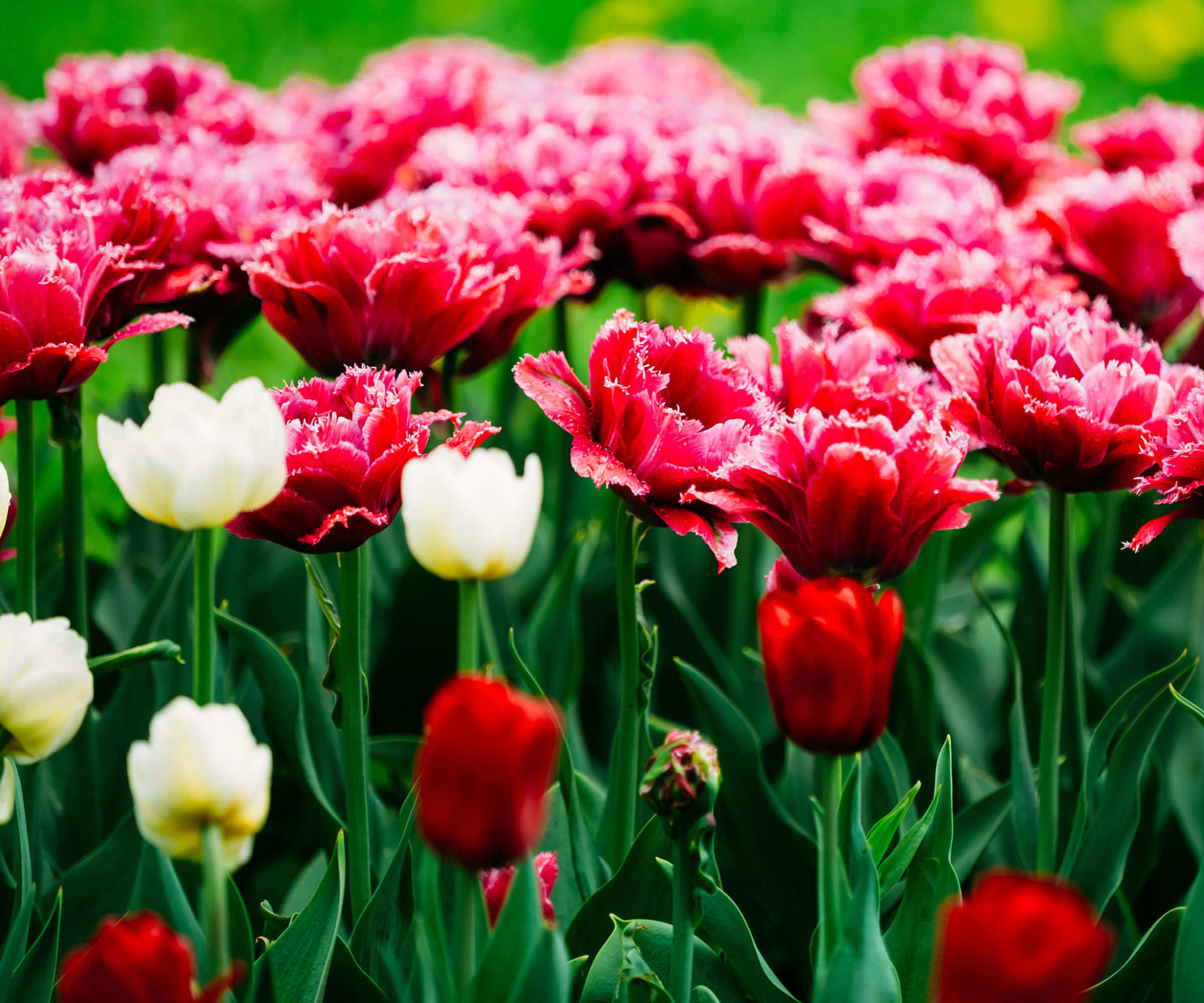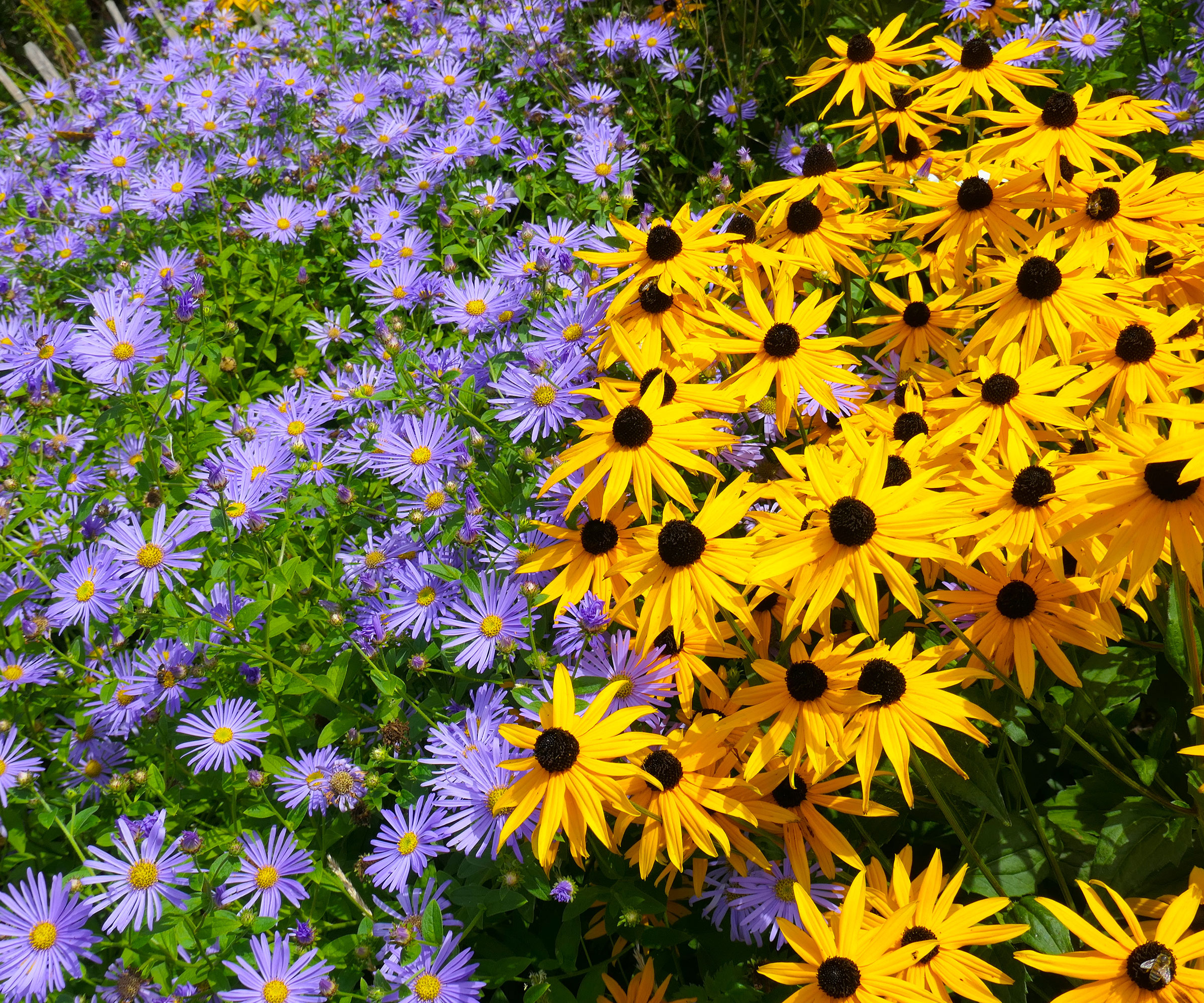Dark Home Exterior? Choose The Right Plants With Our Expert Dark House Landscaping Tips
If the front or back of your house is very dark, what are the implications for the plants you grow? We reveal how understanding dark house landscaping can help you pick the right plants


Choosing foundation plants for a dark background such as a house or shed is much easier if you get to grips with dark house landscaping. To a certain extent, this involves an awareness of color wheel combinations to ensure the right plant colors will go together.
If you are interested in developing landscape design ideas to help you select the best plants for your space, always take into consideration the color of your house as well as other structures and hardscapes. A dark house can serve as a backdrop for contrasting light-colored plants and flowers along the foundation, or bold plants that make a statement.
Landscaping for a black house or a dark building can be a challenge. You might find it’s hard to keep plants from disappearing if their foliage is also dark. Take advantage of these expert tips to help you make more appealing plant selections for a dark home or garden-based building.

Going Cool or Warm for Dark Exterior Planting
When you are gardening with color in mind, bear in mind that choosing warm or cool colors can change the perception of space. Warm colors such as orange, yellow, and red can bring excitement to planting, making plants seem closer. Warm colors create a feeling of a smaller space. Cool colors such as blue, violet and green are just the opposite. They evoke a feeling of distance, making the area seem larger.
The Right Foliage for a Dark Colored Exterior
When planting for dark house landscaping, you should definitely give some thought to foliage. While this often involves an element of working with green, it can be a lot more subtle and complex. You will often need to consider multiple shades of green, lighter or darker. Plants and shrubs can also be other colors, such as chartreuse, burgundy, blue, gray or variegated. Furthermore, plants with variegated foliage can include white, green or yellow, with splashes of color such as pink or red. Examples include variegated yucca, coleus and variegated boxwood.
Evergreen versus Deciduous Color Combinations
Evergreen plants are not only green year round but come in varying shades of green, such as lime, chartreuse and greeny gold. When deciding on plants for a dark colored house, use these notes to permanently fill in a background to make it fuller or to increase winter interest.
By contrast, deciduous trees lose their leaves in winter but they can put on a spring flowering show as well as three seasons of foliage color. Japanese maple trees, for example, are revered for their continuing foliage color change.
Sign up for the Gardening Know How newsletter today and receive a free copy of our e-book "How to Grow Delicious Tomatoes".

Get Wise With Color Combinations
When choosing the best plants for dark house landscaping, it’s not necessary to stay with a ‘tried and true’ color scheme. However, there are a few color-specific tricks that can help to amplify the impact of plant selections. When landscaping for a black house or dark exterior house garden, consider these design tips – and don’t be afraid to be adventurous:
- Monochromatic color schemes include one pure color besides the foliage and may include varying shades (where you add black to pure color) or tints (where you add white to pure color) of that color. So an example of a monochromatic garden color group would be red, pink and dark red.
- Analogous colors reside next to each other on the color wheel. An example of analogous colors would be blue, blue-violet and violet.
- Complementary colors sit across from each other on the color wheel. Examples of these color combinations are yellow and violet, and orange and blue.
- Primary color groupings combine red, yellow and blue. To tone it down, you can add tints or shades of these primary colors.
- A pastel garden color theme combines different tones of color that create a soft and muted look. Within this color theme, silver or grayish foliage often look more harmonious than greens.

Best Plant Ideas For Dark Exteriors
Once you have grasped some of the essentials of the color wheel, you can start to explore specific themes designed to create points of contrast or difference with your dark home exterior. Here are some suggested plants for a dark-colored house that build on specific planting themes:
- Plants for a cool color scheme: For contrast against a dark background, try the color green, plus variegated shrubs, plus plants with white flowers. Choose evergreen shrubs for year-round color such as Aucuba japonica, variegated boxwood varieties, variegated abelia, tri-color dappled willow, variegated yucca (blooms white), or variegated leucothe. A panicle hydrangea variety has green foliage and large, white blooms that fade to mauve, which can form a hedge with several planted close together. Solid green shrubs include American yew, azaleas and laurels. For a small shrub with a textural change, try dwarf Japanese cedar. Choose plants in groups of three or more for a landscaped appearance.
- Plants for a flower bed against a dark background: Try a complementary color palette such as violet and yellow, for example. Choose yellow rose bushes, yellow daylilies and purple garden phlox.
- Plants for a native bed: Try yellow coneflower, coreopsis or rudbeckia, and add blue false indigo, blazing star, smooth aster and anise hyssop for a complementary scheme.
- Plants for a bold statement: Using analogous colors, try ‘Orange Rocket’ or ‘Sunjoy’ barberry shrubs, vivid orange flowering perennial butterfly weed (Asclepias tuberosa), ‘Amber Jubilee’ ninebark and yellow mums. For a picture-perfect annual in a container on the porch, try Crossandra ‘Orange Marmalade’.
Frequently Asked Questions
Are seasons important for dark exterior plants?
Seasonal changes can affect how the plants look year round. Many plants, including shrubs, put on a fall foliage change and may also produce bright red, purple, or black berries. Include all those variations when planning a new landscape area with a dark exterior house garden in mind.

After graduating from Oklahoma State University with a degree in English, Susan pursued a career in communications. In addition, she wrote garden articles for magazines and authored a newspaper gardening column for many years. She contributed South-Central regional gardening columns for four years to Lowes.com. While living in Oklahoma, she served as a master gardener for 17 years.